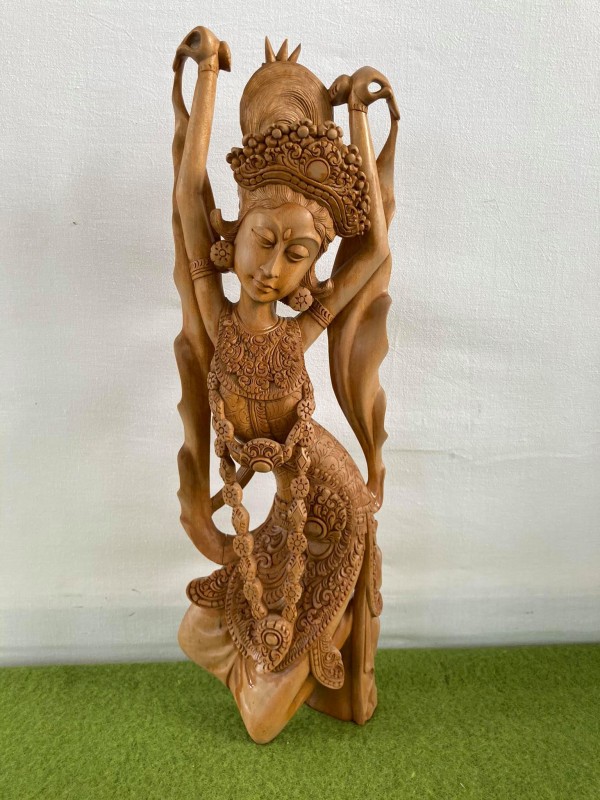
Seline Hofker pleit ervoor om het portret van de bekende Balinese danseres Ni Sadri geschilderd in 1938 door haar oom uit voormalig Nederlands-Indië, Willem Hofker, te behouden voor Nederland (NRC 19/11/21). Het Rijksmuseum heeft al in bezit een pastel tekening van Ni Sadri van de hand van dezelfde schilder. Dit kleurrijke portret zou een mooie aanvulling op de collectie zijn.
Seline Hofker argues in favor of retaining the portrait of the well-known Balinese dancer Ni Sadri painted in 1938 by her uncle from the former Dutch East Indies, Willem Hofker, for the Netherlands (NRC 19/11/21). The Rijksmuseum already owns a pastel drawing by Ni Sadri by the same painter. This colorful portrait would make a nice addition to the collection.
https://www.rijksmuseum.nl/nl/zoeken?q=balinees&f=1&p=1&ps=12&st=Objects&ii=0
Maar niet alleen daarom. Het geeft tegenwicht aan de beladen discussie over het teruggeven van drie eeuwen roofkunst uit voormalig Nederlands-Indië door Nederlandse musea aan Indonesië. Niet alle kunst uit de gordel van smaragd is geroofde kunst. Hollandse kunstenaars aldaar hebben indertijd prachtige kunstwerken zoals schilderijen gemaakt. Schilderijen die impressies van het leven toen uitbeelden. Schilderijen die op hun beurt voor een groot deel zijn geroofd door de Japanse bezetter en daarna de Indonesische vrijheidsstrijders.
But not just because of that. It counterbalances the fraught discussion about returning three centuries of looted art from the former Dutch East Indies by Dutch museums to Indonesia. Not all art from the emerald belt is looted art. Dutch artists there made beautiful works of art such as paintings at the time. Paintings depicting impressions of life back then. Paintings that in turn were largely looted by the Japanese occupier and then the Indonesian freedom fighters
https://www.nrc.nl/nieuws/2020/11/06/laat-indonesie-ook-roofkunst-afstaan-a4018751
Zo ook een aantal schilderijen van Willem Hofker. Natuurlijk maar een fractie vergeleken met de geroofde kunst door Nederland. Maar het portret van Ni Sadri brengt de nuance in de discussie over roofkunst. Daarnaast weerspiegelt het schilderij een tempo doeloe die in het collectief geheugen moet blijven. Immers, Nederland anno nu heeft haar DNA liggen in het voormalig Nederlands-Indië. Het Rijksmuseum zou op de smeekbede van Seline Hofker moeten ingaan.
Also a number of paintings by Willem Hofker. Of course only a fraction compared to the art stolen by the Netherlands. But the portrait of Ni Sadri brings nuance to the discussion about looted art. In addition, the painting reflects a tempo target that must remain in the collective memory. After all, the Netherlands today has its DNA in the former Dutch East Indies. The Rijksmuseum should respond to Seline Hofker’s plea.
Ricky Turpijn



